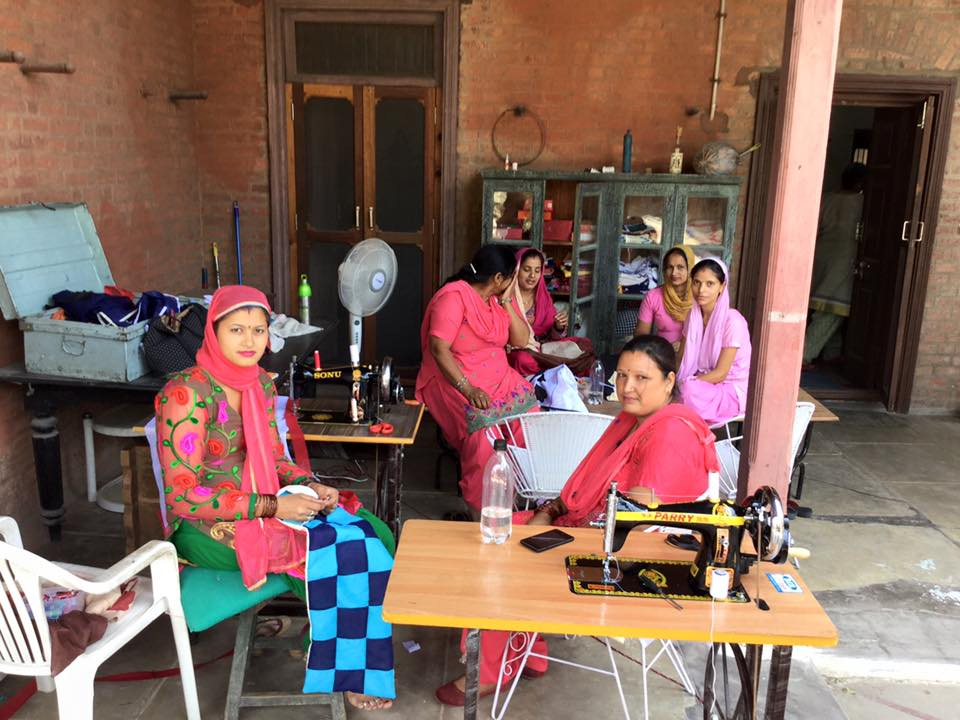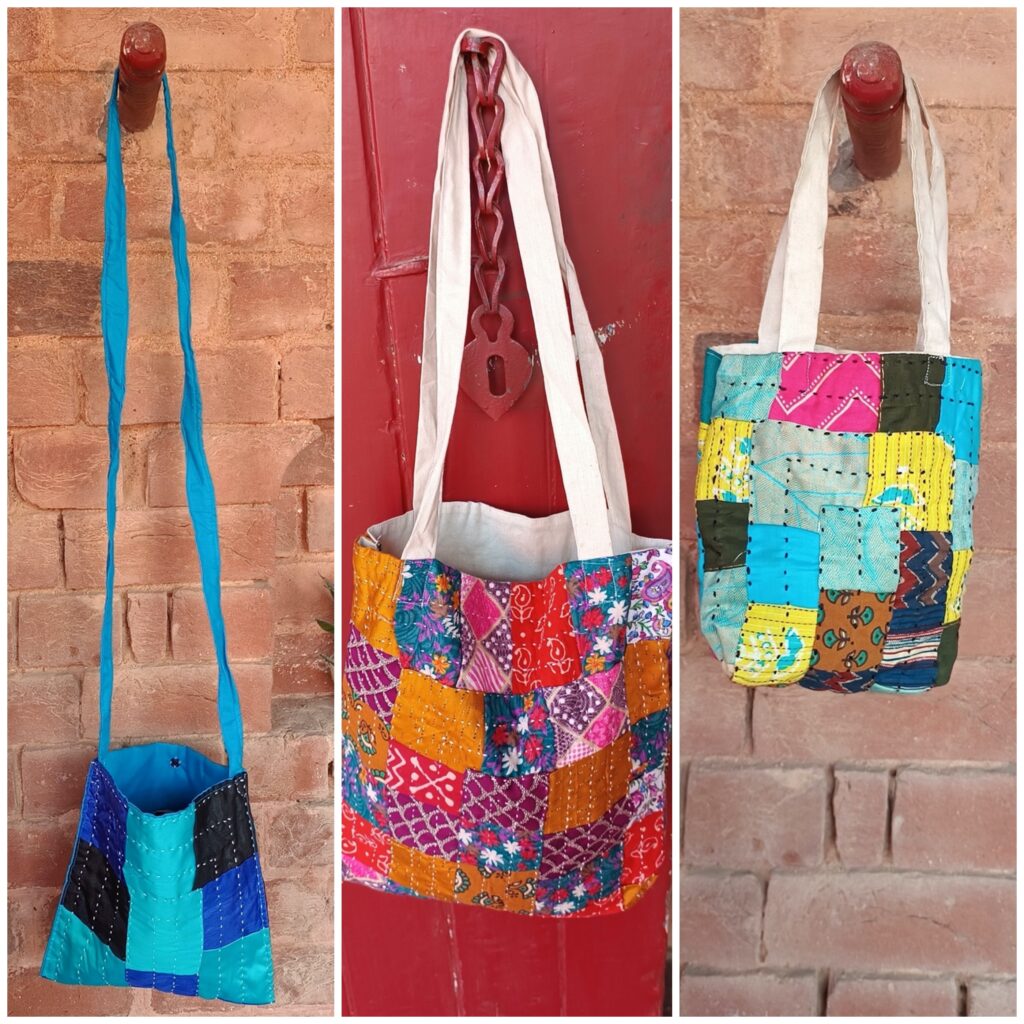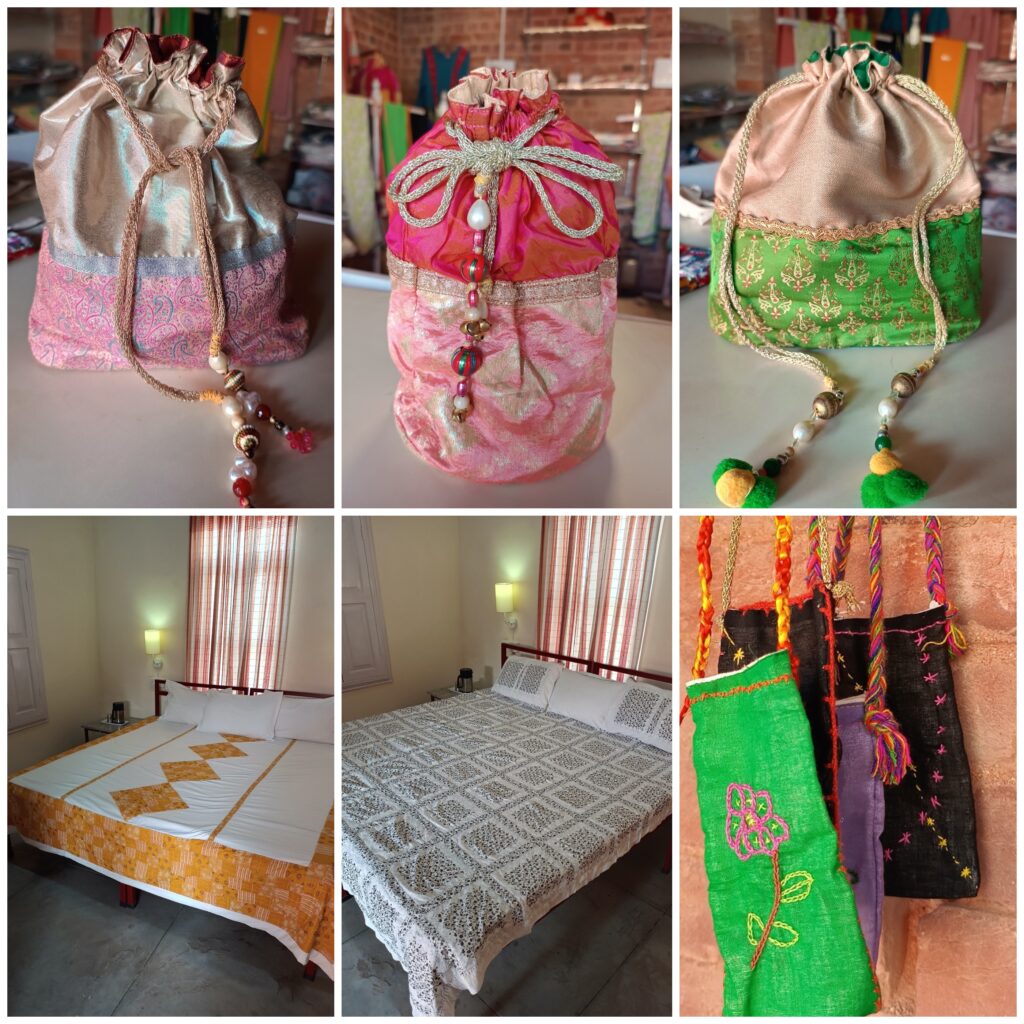Many years ago, as we walked through the village, one of our guests remarked that the women of Garli appeared subdued. Their body language, they said, suggested a lack of purpose, and perhaps an indication of depression. We hadn’t noticed this, but then we hadn’t looked either. A little investigation showed that some women were indeed having a tough time. Either their husbands were alcoholic or abusive, or working elsewhere leaving them to look after the children and the in laws.
That did not sit well with Ira, so she decided she needed to do something about it. But the question was what? One day, while going to the attic, she discovered an old cushion cover in the attic made of patchwork (Traditional name “Katoyan”) which had potential. As an trial, it was decided to get more of these made. We tried to contact ladies who could make some. To our surprise we found only one old lady, partially blind, who could.
With the easy availability of readymade products, the need for readymade products were easily available, this particular skill was on the verge of extinction.
You can’t mechanise creativity, reasoned Ira, and “Katoyan” embodied the art of masterfully putting together cut pieces into some interesting designs. Inherently, every housewife has the knack of making her home look good with whatever resources she has at her disposal, and she is always willing to learn something new!
Being a creative person herself, Ira decided to revive that tradition. First, she made a few items by herself to understand the process and skill required. Once she had a good idea, she announced that she would like to enlist the help of the local ladies to take this project further.
We started speaking to our local village folk about our project. We wanted to create women entrepreneurs. We would teach them the craft and skill them at our cost. They would make the products which we guarantee a sale at a predetermined price. For the dynamic ladies willing to step up, we were also willing to provide financial and marketing resources to help them succeed.
Being city folk, we had not catered for the multitude of responsibilities the local housewife has to bear. Some could make time for a few hours during the day, but preferred a steady income, as they simply could not take any risks. Others exuded scepticism, and a pronounced wariness about our expressed intentions.
It was clear our model would not work. We huddled. We spoke to several people; many of whom suggested we abandon the project. Why take the pain at this stage, they asked. We had heard that before when we were renovating Naurang Yatri Niwas, so that argument did not deter us!
But Ira had already decided she was going to go ahead anyway on her own. She had a sense that once she started, some ladies would certainly follow. Her model was simple. Give the housewife a change of environment, a chance to work away from home without any pressure. Work 4 hours a day at our house, make items designed by Ira, and get paid for it!
Finally, some ladies agreed, and the journey began! Ira went on a shopping spree buying material and sewing machines. She started them on the basics of stitching by hand, letting them practice without any worry for wastage.

The ladies loved it. First, they had “me” time. Second, they had a quiet, non-interfering environment that allowed them to chat and work. Third, they had the satisfaction of seeing their creation appreciated. Finally, come hell or high water they would get paid every month into a bank account opened in their own name. It was their money, to be spent as they saw fit.
Over the years, these diminutive ladies who used to get easily flustered began emerging as confident, well-groomed ladies who could now talk to visitors and carry out sales transactions with foreign guests!! On the home front, they started commanding an increasing respect from their family members. One enterprising lady finally found the courage to slam her alcoholic husband into rehabilitation much against the wishes of her in laws and neighbours. But she stood firm, and now her husband has given up alcohol.

It also gave encouragement to several other women to stitch garments like kurtas and salwar suits out of home. Today there is a flourishing set of seamstresses in the village catering to orders from neighbouring villages.

Over the years, the range of products expanded. From bed covers to cushion covers to stoles to potlis and many other products. Slowly, they have gained the confidence to design their own products. Today, we can proudly say that what you buy is 100% imagined, conceptualised and made by the village ladies. Ira, however, continues to provide the fabric and resources and encourages them further.
But there are hurdles. Our products are expensive as compared to manufactured products. Thats because 80% of the cost goes towards labour, which is money going to the ladies. In fact. all the money from sales goes back into the village ecosystem. We must constantly explain to our customers that when they buy these products they are essentially contributing to the cause of these enterprising women.

Every journey starts with a small step. We took one, and It’s been a great and satisfying journey so far. Now, many more ladies want to join in this journey. If we can find a decent sales outlet for our products, we will be willing to go the distance.
Those who wish to buy these products can do so from Shop – Naurang Yatri Niwas

